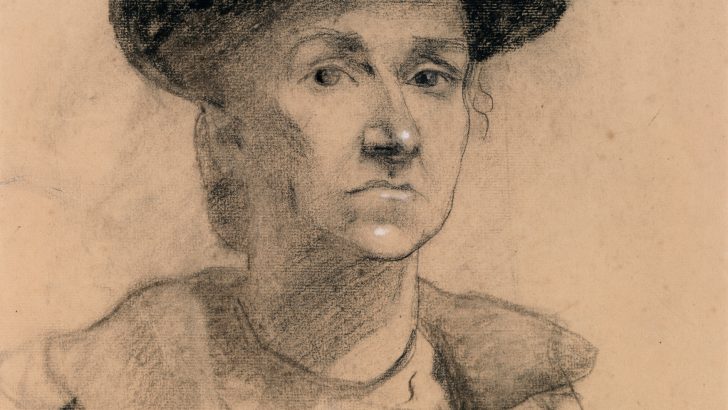National Gallery of Ireland Print Gallery
Drawing Dublin exhibition curated by Anne Hodge (Curator of Prints and Drawings) and Niamh MacNally (Assistant Curator of Prints and Drawings)
The three rooms of the Print Gallery in the NGI are currently devoted to a most interesting exhibition, one filled with unusual and little seen images of the capital city over a run of some three centuries from the early 18th to the mid 20th Century.
The first room interestingly is devoted to images of the surrounding countryside, largely seeing the city, so much smaller then, from the hills and mountain around.
George Petrie has a drawing of a wind mill used to raise limestone from the quarry in Rathgar. This was a new notion for me: I now find it stood where Herzog Park tennis courts and playground are today, just of Orwell Road. Other images are of Donnybrook fields in the days of the infamous Fair.
The third room displays a pristine set of Malton prints, calm and civilised Georgian view of some of the grand places and building of the city. These are lovely but the heart of the exhibition is to be found in the middle room. This is filled with little known, even previously unseen items, and is a delight, even for those whose grasp of the changes in the city may be a little uncertain.
Here are 10 drawing from Flora Mitchell’s famous series (published in 1966 as Vanishing Dublin). She recorded many of the out-of-the-way and now vanished courts and streets that lay behind the civic buildings in Malton’s views. Alas she was wonderful on buildings, but her people are weak.
But other artists here capture all the various shades of Dubliners there were. Pride of place has to go to the calm, resigned face drawn by Sarah Purser of Mrs Moore of 24 Powers Court, c. 1910, decked out in her best hat and coat; she looks like the weight and worries of the world rest on her shoulders. She reminds one of one of the stalwart women in O’Casey’s plays.
Literary echoes can be detected in the watercolours, quickly created in a note book during his lunch break by Michael Healy a stained glass worker. They reminded one of those brief snatches of Dublin life which Joyce recorded in his epiphanies, those snapshots of street life and talk about 1898. There are other things, cartoons of Dublin celebrities by a well-known cartoonist, but the seven pencil drawings by Harry Kernoff which I was not familiar with are wonderful, and come from his most creative period in the late 1930s.
This is definitely a show to see if only because it records a world long gone, or in danger of vanishing before our eyes along with its wonderful people, under the burden of internationalised glass and concrete.
The exhibition runs until August 26, 2018.


 Peter Costello
Peter Costello Mrs Moore, 24 Powers Court, Artist: Sarah Henrietta Purser, 1848-1943, Charcoal, bodycolour (white highlights) on buff laid coloured paper.
Mrs Moore, 24 Powers Court, Artist: Sarah Henrietta Purser, 1848-1943, Charcoal, bodycolour (white highlights) on buff laid coloured paper. 